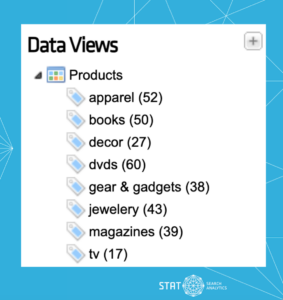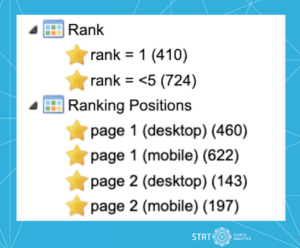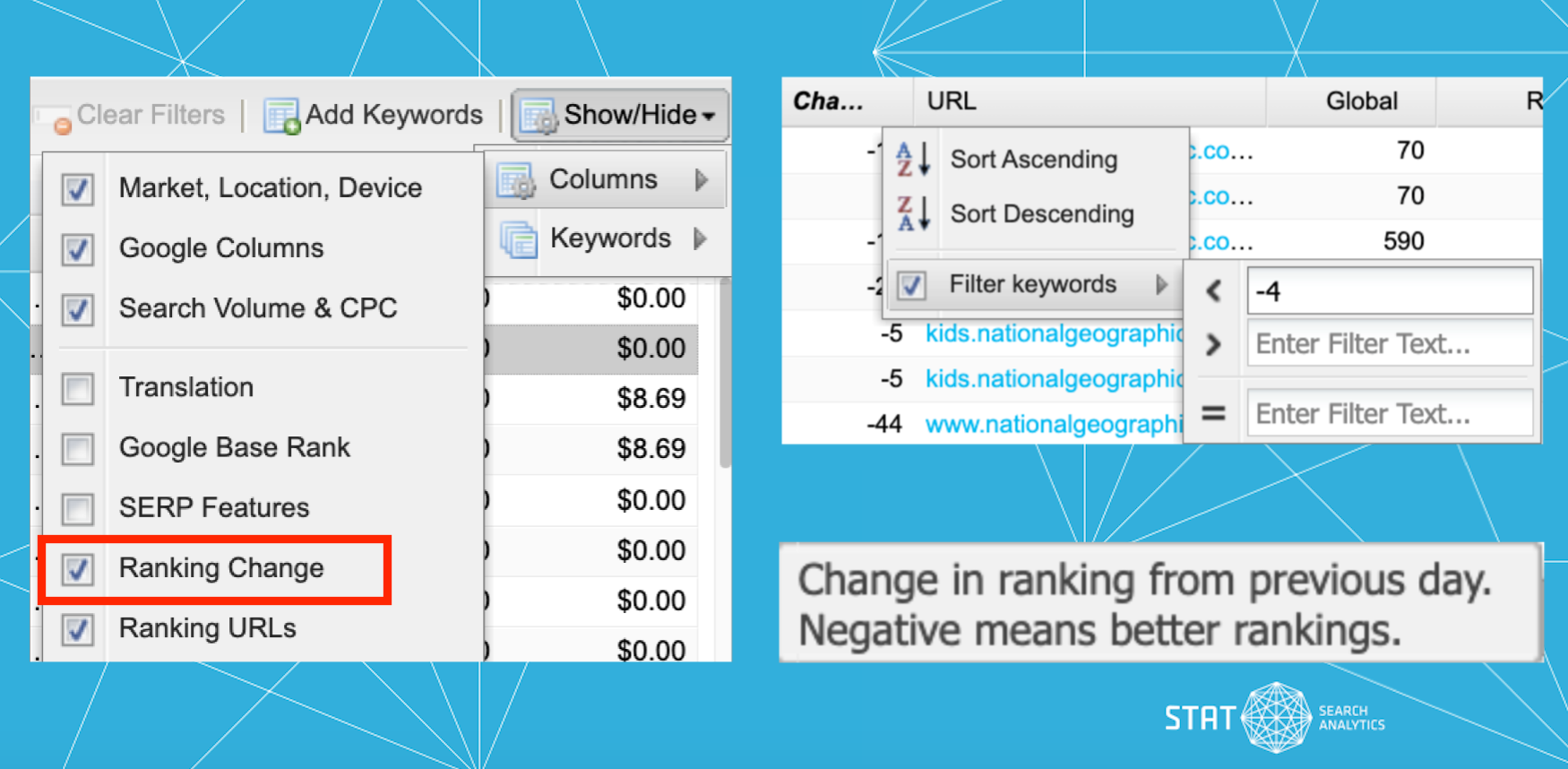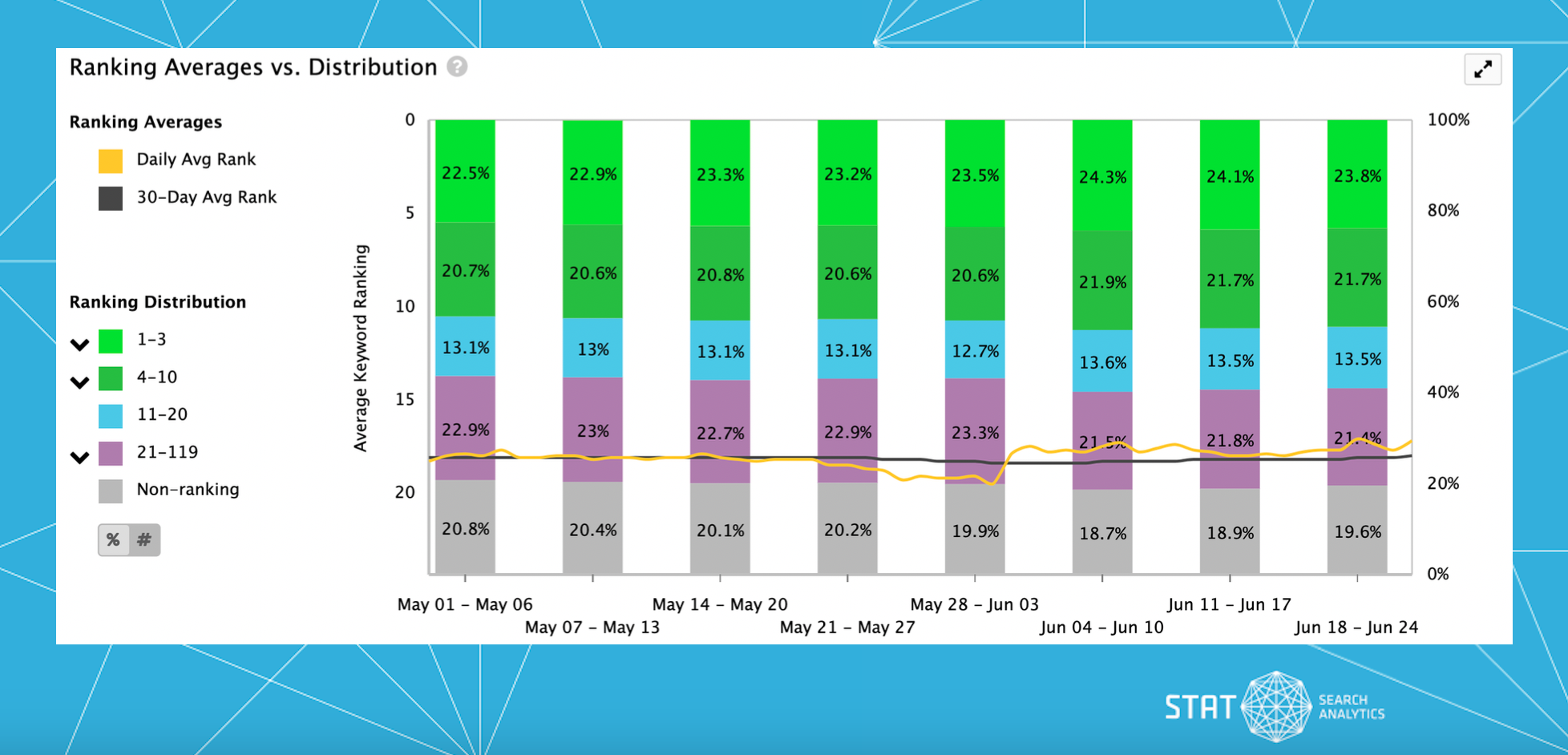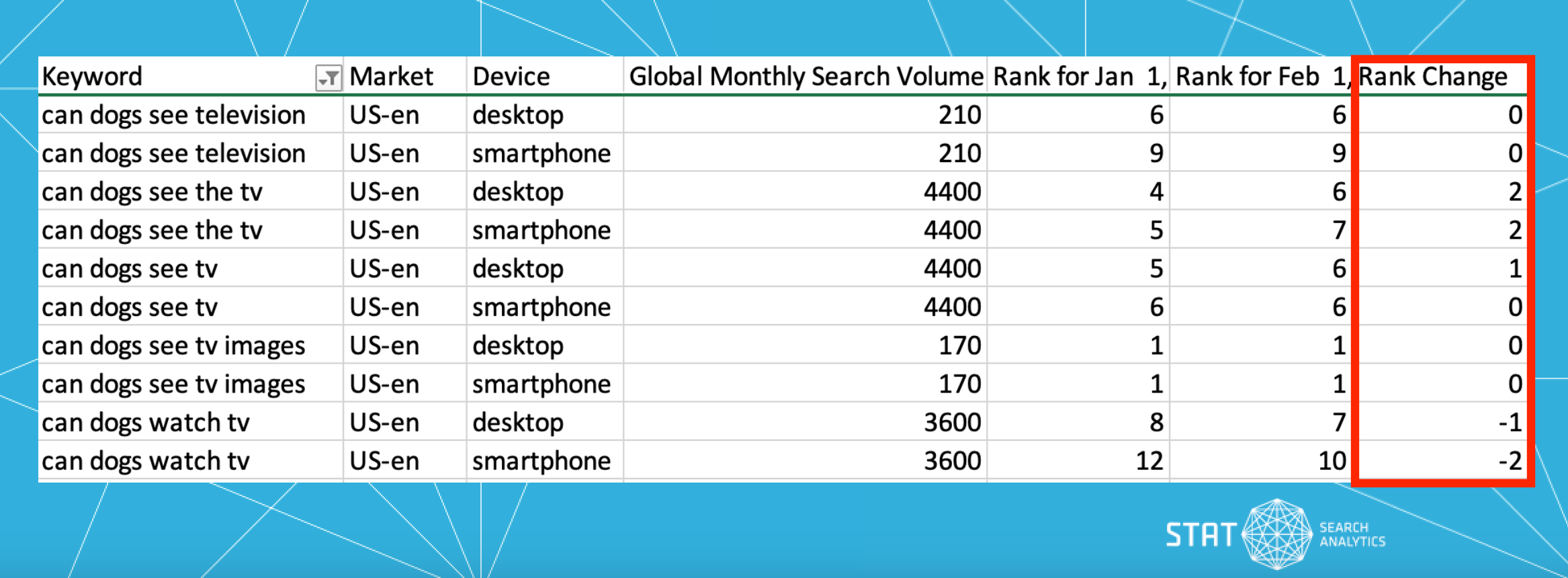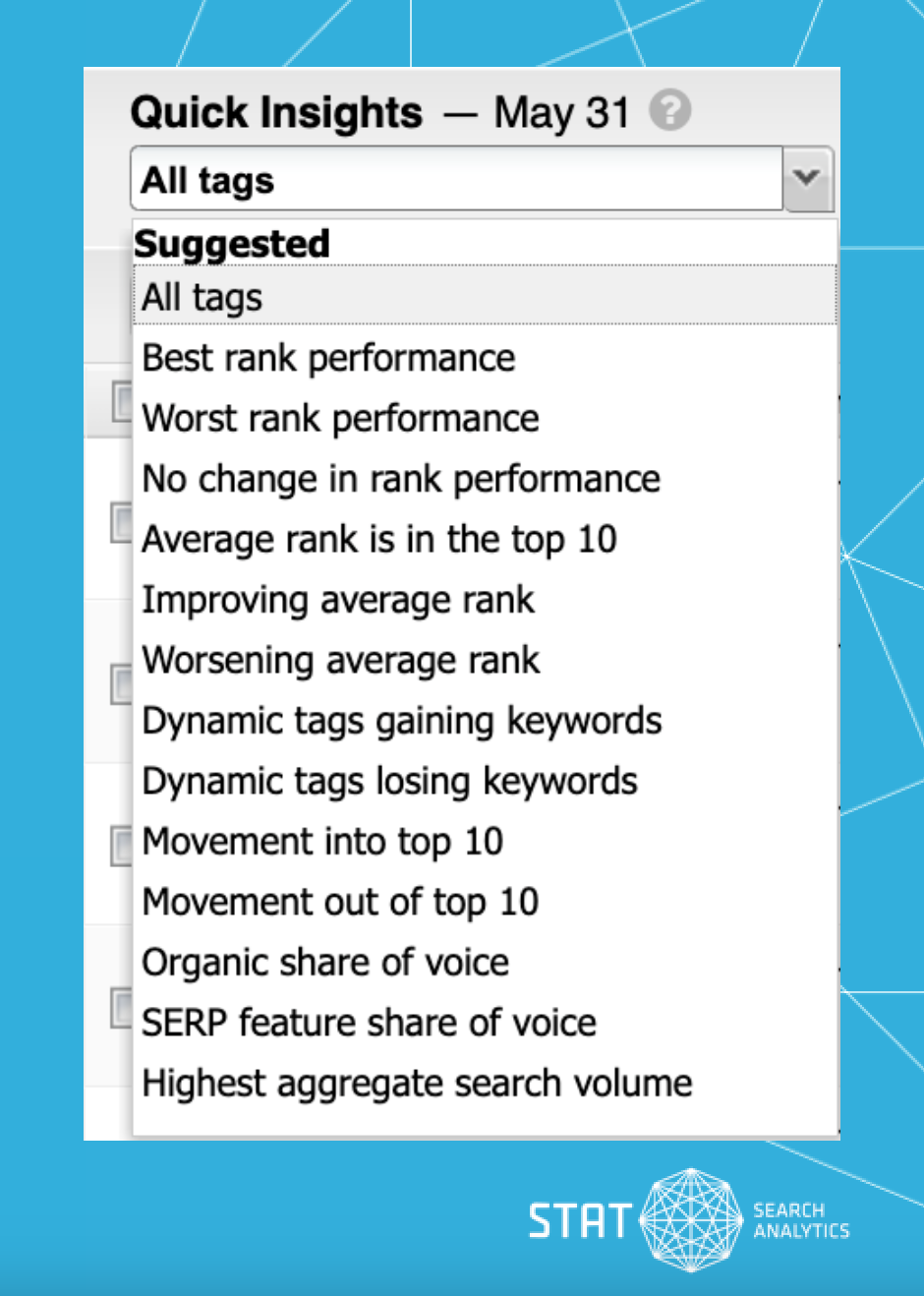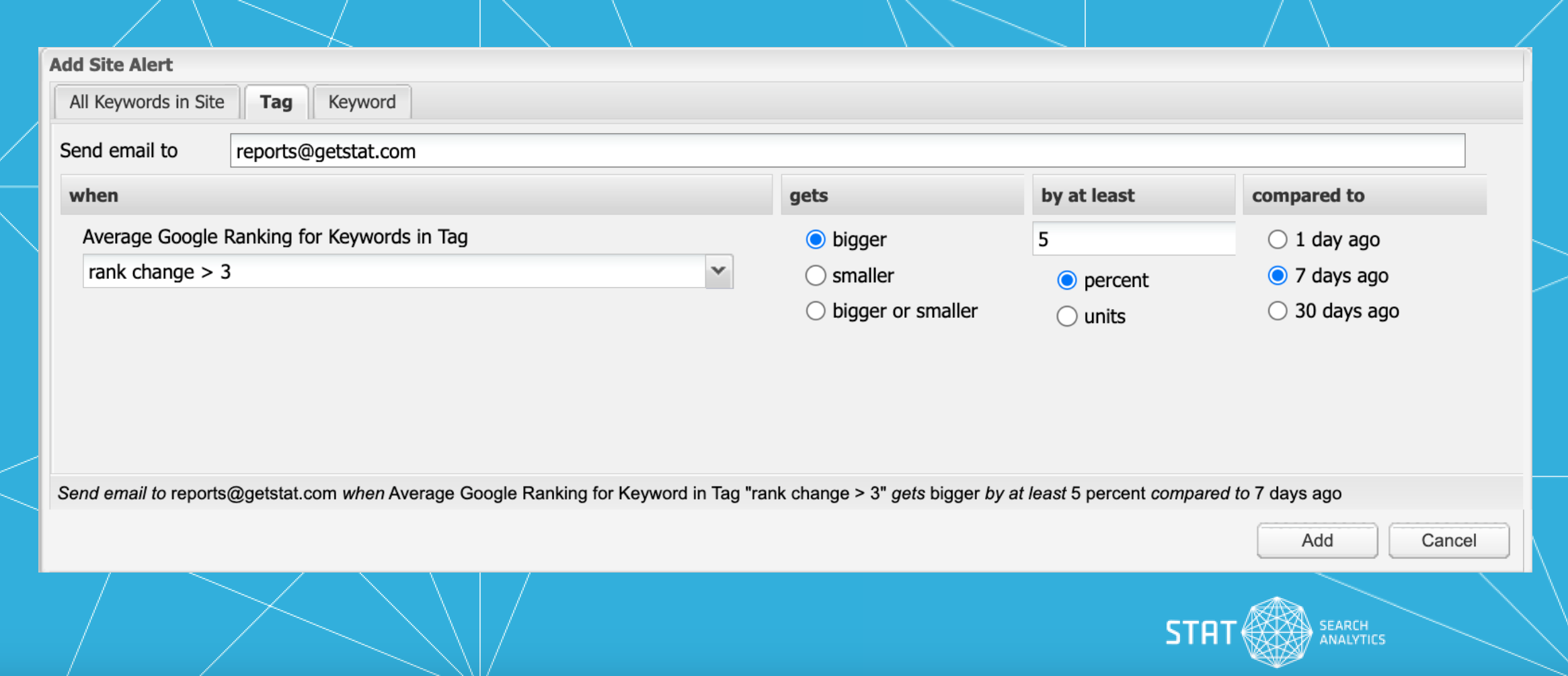Slice and dice your SERP data to surface targeted insights and see which keywords are on the rise.
When it comes to enterprise SEO and tracking boatloads of keywords, it’s easy to feel overwhelmed by the sheer volume you need to stay on top of and the massive amounts of data available to you.
With smart keyword segmentation and the right analytics though, gleaning granular insights from your SERP data doesn’t need to be a challenge.
We’ll walk you through how to set up more insightful organic tracking so you can cut through the noise and surface the grooviest movers and shakers in your keyword set. Let’s jump in!
Organize your keywords into custom segments
First things first. The key to making sense of vast amounts of data and distilling it down into actionable SEO insights is smart segmentation.
Each segment you set up will allow you to uncover which keywords in that particular strategic grouping are performing (or which aren’t) and see your ranking URLs to analyze and action accordingly.
In STAT, tags are a powerful, customizable segmentation tool that allow you to capture and group keywords based on the qualifying criteria you set. They come in two distinct flavours: standard and dynamic.
Group by keyword characteristics
Standard tags are static and focus on attributes of the keyword itself (term, location, device) — so you choose exactly which keywords to group within them and those keywords will stay put until you decide to manually adjust them.
What makes sense will vary by site, but some of the most common static keyword buckets to organize your keywords into include: brand, product line, search intent, device type, and location.
Set up static keyword segments with standard tags
Standard tags allow you to group keywords based on attributes of your choosing.
Whether tracking internally or for a client, standard tags are the best place to put any keywords that have been identified as a top priority to rank for. This way they’re top of mind and you’ve always got tabs on them.
Group by SERP metrics
Dynamic tags take things one step further, allowing you to surface insights via the tag itself. While standard tags centre the keyword, dynamic tags organize based on SERP analytics.
You can define filtering criteria that will act as “rules” for which keywords get slotted into each of your dynamic tags — this means that keywords will enter and exit your dynamic tags based on meeting the conditional criteria each day, depending on what’s happening on the SERPs. (More on smart keyword segmentation here.)
For example, we recommend creating dynamic tags based on the organic ranking positions that matter most to you (such as page one, page two, etc.), so you can quickly understand where your keywords are sitting on the SERP and how that changes over time.
See your movers and shakers
Dynamic tags can easily surface the keywords that are seeing movement on the SERPs.
You can also set up dynamic tags based on keywords that see significant positive changes in rank, such as “rank improved by five,” (or “rank worsened by five,” if you’re looking at the opposite direction) so you can quickly zero-in on keywords that are seeing the biggest gains day to day.
The other benefit of setting up dynamic tags in this way is that they can be extremely helpful in prioritizing keyword opportunities. Tags for page two rankings, for example, likely house many keywords that could be considered low-hanging fruit, with the potential to bump up to the first page with some targeted tweaks and optimizations.
Group keywords by ranking fluctuations
By setting up dynamic tags for your improving and worsening keywords, you’ll easily be able to see changes in performance.
And if you want to get more granular, look no further than the Dynamic tag in/out report. By filtering this report, you can zoom in on not only the keywords moving in and out of your customized segments themselves — causing any tag fluctuations — but surface the ranking URLs from each organic result.
A filtered Dynamic Tag In/Out report
Some quick filtering will quickly yield the keywords entering and exiting your dynamic tags and the exact dates that they did.
This go-to report can provide invaluable insight into exactly when your keywords are seeing gains (or losses) and which are showing the most volatility. In the example above, we can see that our keywords have moved up in rank, having exited the tag for keywords in the 11–20 rank range and entered the tag for keywords in the top 10.
Investigate ranking trends over time
Now that your keywords are in focussed, manageable groups, a great place to start your hunt for those on the rise is by assessing the overall health of your tags’ organic performance.
Since the SERPs are in flux from one day to the next, it can be easy to miss the forest for the trees (or rather, miss the long-term growth for a day’s dip, and vice versa).
This is why it’s helpful to take a step back and look at your ranking trends over time. This high-level, gut-check metric will help you find keyword segments that are (hopefully) charting up as rankings improve as you implement optimizations over time.
Ranking Trends in the Dashboard
Explore ranking trends by site or tag level and dig into your ranking trends and distribution over time.
To see this in STAT, select a segment, pop over to the Dashboard tab, scroll down below the Daily Snapshot to the Ranking Trends pane. You’ll quickly understand how your average rankings are charting course and the different ranks that set of keywords fall into.
In the example above, this particular segment is on the rise. After a brief decline, the daily average rank now heads up and to the right as more and more keywords land into better ranking distribution buckets.
When you’ve zeroed in on top-priority tags and are ready to dig deeper, you can pull the handy Ranking trends over time report for each tag to get a better understanding of which keywords within them are seeing the most improvement over time.
The Ranking Trends Over Time report
This CSV export comes ready for filtering to glean granular SERP insights.
This report compares how rankings have changed between any two dates of your choosing. In the example above, we can see that the ranking for [can dogs watch tv] improved by 1 for desktop, and by 2 for smartphone (represented in the report as a negative value) when comparing rankings for January 1st, 2023 to February 1st, 2023.
Compare SERP analytics for quicker insights
Next you’ll want to move from straight rankings to SERP analytics to give you several strategic angles to view your data from. The simplest way to identify segments with influential keywords is to have their analytics laid out side-by-side for quick and easy comparison.
Keep an eye out for any outliers — segments that stand out as clear winners (or losers) will identify which of your tags are seeing the most relative improvement (or which are lagging and could warrant a little extra attention.)
If you’re in STAT, the Tags tab is the place to go for this. It will allow you to quickly assess high-level performance across all your tags at a glance, showing you aggregate metrics on rank change, keywords within the top 10, organic share of voice, and more.
The Tags tab
The tags tab provides several helpful high-level insights to gauge the performance of your keyword segments at a glance.
There are also powerful Quick Insights options that do some serious analytical heavy-lifting for you to select from in this tab, including:
- Movement into top 10 — to see which of your tags are seeing the most new keywords claim page one real estate
- Best rank performance — to see which segments have keywords on the rise across several metrics
- Organic share of voice — to see which keywords drive the most organic visibility
Just to name a few of our favourites. Head on over to the Knowledge Base for a short description of each quick insight option available in STAT.
Quick insights in the Tags tab
It’s easy to surface high-level insights for any of your keywords segments in STAT.
Set up automated alerts for instant action
So many SERPs, so little time, so make your life easier with automation. You’ll be the first to know when there’s improvement on your SERPs with the ability to set up alerts based on customizable criteria in STAT.
Alerts in STAT
Set up automated alerts delivered straight to your inbox so you’re the first to know when there’s movement on the SERPs.
Alerts can be triggered based on improvement (or worsening) in rank by a specific number of positions, or by a percentage that they fluctuate by, so you’ll be pinged when there’s celebrating to do (or when a particular keyword or keyword set has dropped down on the SERPs and warrants some TLC).
We’ve laid out some recommendations for alerts in the Knowledge Base. By setting up alerts for the segments and metrics you care about most, you’ll never miss when your optimizations have made an impact or when algorithm shenanigans are shaking up your rankings.
Find your most influential keywords lickety-split
Whether it’s informing your strategy going forward or reporting to stakeholders to prove the ROI of your optimizations, setting up insightful organic tracking and identifying your most lucrative keywords is essential to successful SEO.
We hope this has sparked some creative ideas for more keyword segments and given you some inspiration for how to dig into all of that valuable SERP data in STAT. If you’re not yet in the tool but are curious to see it in action, give us a shout and we’d be happy to show you around.
